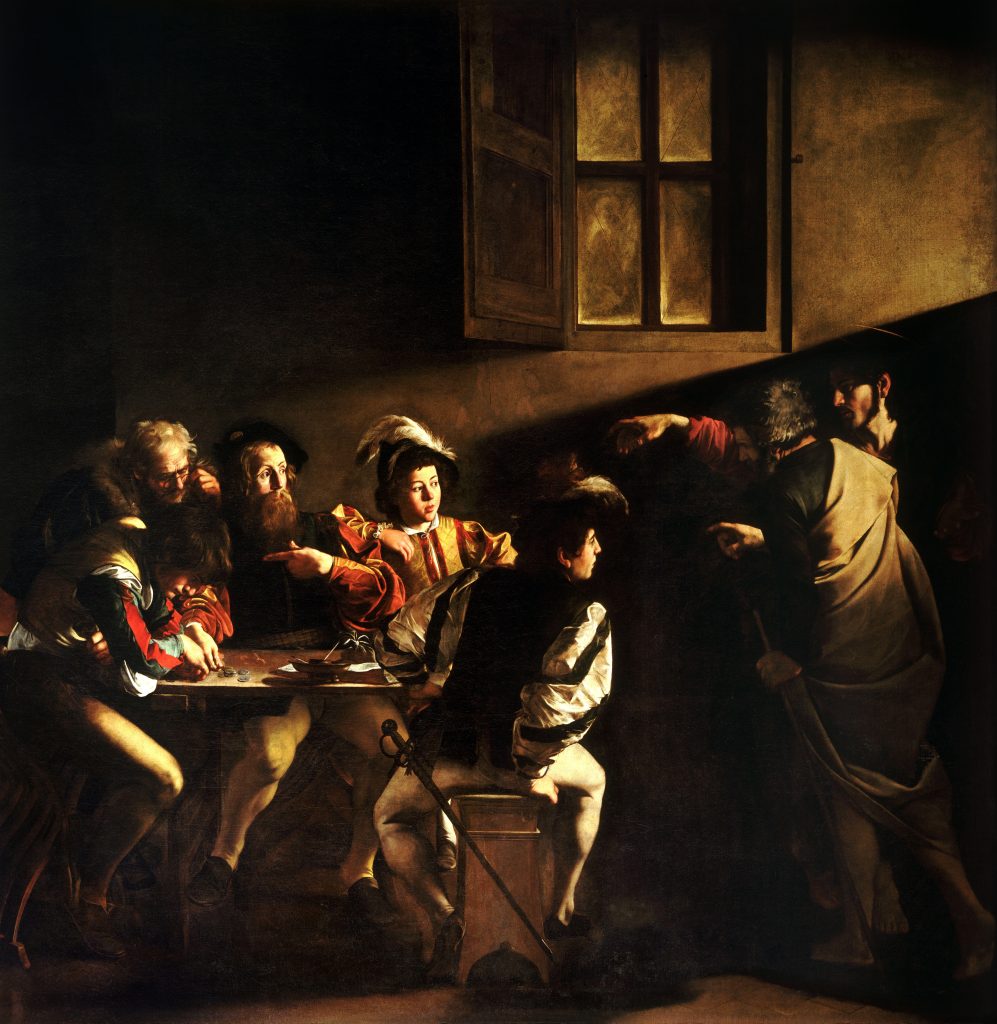The Calling of Saint Matthew
“The Calling of Saint Matthew” is a masterpiece of Baroque art, painted by Michelangelo Merisi da Caravaggio in 1599-1600. The painting depicts the moment when Jesus Christ calls the tax collector Matthew to become one of his disciples, and it is notable for its dramatic use of light and shadow, as well as its emotional intensity.
The painting is set in a dimly lit room, with a group of men gathered around a table. On the left-hand side of the painting, Jesus is depicted pointing at Matthew, who is sitting at the table counting coins. The men surrounding Matthew are depicted in various poses, with some looking at Jesus in surprise, while others are focused on their work.
One of the most notable aspects of “The Calling of Saint Matthew” is the way that Caravaggio uses light and shadow to create a sense of drama and intensity. The painting is bathed in a golden light that illuminates Jesus’ face and hands, while the rest of the scene is shrouded in darkness. The contrast between light and shadow creates a sense of tension and urgency, as if the moment is a turning point in Matthew’s life.
Another notable aspect of the painting is the way that it emphasizes the emotional intensity of the moment. The expressions on the faces of the men in the painting are deeply emotional, with some looking shocked or surprised, while others are more contemplative. The painting conveys a sense of the importance of the moment, and the gravity of the decision that Matthew must make.
The painting has been interpreted in many different ways over the years. Some see it as a reflection of Caravaggio’s own spiritual beliefs, while others see it as a commentary on the power of divine intervention. Still, others see it as a reflection of the social and political upheavals of the time, with the emphasis on the importance of individual choice and action.
In conclusion, “The Calling of Saint Matthew” is a masterpiece of Baroque art, notable for its dramatic use of light and shadow, emotional intensity, and its powerful message about the importance of individual choice and action. The painting is a testament to Caravaggio’s skill as an artist, and it continues to fascinate and inspire new generations of art lovers and religious enthusiasts to this day.

